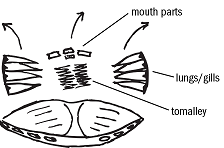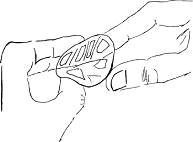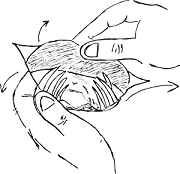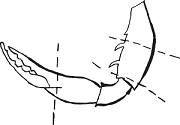New York State Blue Crab Cooking & Eating Guide
- New York State Blue Crab Cooking & Eating Guide is available in Portable Document Format (PDF) in English, Spanish and Chinese.
Blue crabs are one of the most popular creatures caught in the Hudson River and in New York City waters. Because of industrial contamination, fish and crabs from these waters can contain chemicals at levels that may be harmful to your health.

- Because chemicals can have a greater effect on the development of young children and babies, women under 50 and children under 15 should not eat blue crabs from the Hudson River, and Upper Bay, Rivers and Kills surrounding New York City.
- Men over 15 and women over 50 face fewer health risks from some chemicals. For that reason, they can eat up to six crabs a week from the Hudson River and New York City waters.
- Crabs from the Long Island Sound, Jamaica Bay and the ocean are less contaminated and are a better choice for everyone.
How to Cook and Prepare Crab to Reduce Levels of Chemicals in a Crab Meal
Tips for Reducing PCBs & Other Chemicals
- Remove the tomalley (also called mustard, green/brown stuff, green gland) of crabs before eating. This is where PCBs (polychlorinated biphenyls), dioxin and metals concentrate.
- Do not reuse the cooking liquid for sauces, soups or stews. Roughly 80 percent of the PCBs found in crabs move into the cooking liquid during steaming/boiling.
Tips for Healthier Eating
- Cook only live crabs. Discard any dead crabs and ones with broken shells.
- Store crabs in a cool, moist environment at 50oF in a breathable container such as a paper bag or cardboard box for short periods of time before cooking. Do not store crabs directly on ice or in water as this will kill them.
- Bacteria, viruses or parasites can be in or on crabs. Keep raw and cooked seafood separate to prevent bacterial cross-contamination.
- Wear gloves while handling or use tongs. Wash hands and surfaces often when preparing fish and shellfish, and keep raw foods separate.
- Cook fish and shellfish thoroughly before eating. Cooked blue crabs have a bright red shell and their meat is no longer translucent.
One Way to Cook your Crabs
| You Will Need | |
|---|---|
| Live blue crabs | Steaming rack or colander |
| Ice & large bowl | Seasonings of your choice |
| Tongs | Water, vinegar and/or broth |
| Large cooking pot and lid | Lots of napkins and a bib |
- Make sure to cook only live crabs!
- Add enough liquid (usually a 50/50 mixture of water and vinegar) to reach the bottom of the steaming basket and bring to a boil. Using tongs, place the crabs in the pot in layers while seasoning as you go.
- Cover and steam for at least 12 minutes. The shells will turn a bright red.
- Remove crabs from pot and allow to cool on ice. Discard all cooking liquid and do not reuse for sauces, soups or stews as chemicals from crab tomalley leach into this water during cooking.
- Ready the napkins and bib and prepare for the feast!
One of Many Ways to Pick Crab Meat

Step One: Once your crabs are cool enough to handle, start the picking process. Remove legs and claws and save for cracking.
Step Two: Using a knife, peel off the "apron" and discard.

Step Four: Scrape away the top layer removing the lungs (or "dead man's fingers"), face parts, and tomalley (mustard, brown/green stuff). Rinsing with water can help remove any remaining tomalley. The tomalley is where PCBs, metals and dioxins accumulate.

Step Six: There is crab meat in all of the leg sections, the claws, and the body chambers. A shrimp fork or nut pick is commonly used to remove the meat or squeeze it out.

Step Three: Holding the crab in your hand, separate the top and bottom shell. Discard the top shell.

Step Five: With your fingers, bend the crab in the middle, breaking the crab in half to expose the chambers of lump crab meat on each side.

Step Seven: To get the meat out of the claws, use a household nut cracker or edge of a knife to gently break the claw open at the marks indicated and remove the meat with a small fork. Be gentle to avoid chunks of shell getting into the meat.
Step Eight: Dip in your favorite seasoning and enjoy!
The Hudson River Fish Advisory Outreach Project
The New York State Department of Health Hudson River Fish Advisory Outreach Project has a goal that all anglers and others who eat fish or crabs from the Hudson River know about, understand and follow the advisories.
For More Information
- New York State Fish Advisories website
- To be a Hudson River partner, call (518) 402-7530 or 1-800-458-1158; email HRFA@health.state.ny.us, or visit our website, www.health.ny.gov/hudsonriverfish
- New York State Fishing, Department of Environmental Conservation, or (518) 402-8920
- Buying and Preparing Fish & Shellfish, Food and Drug Administration